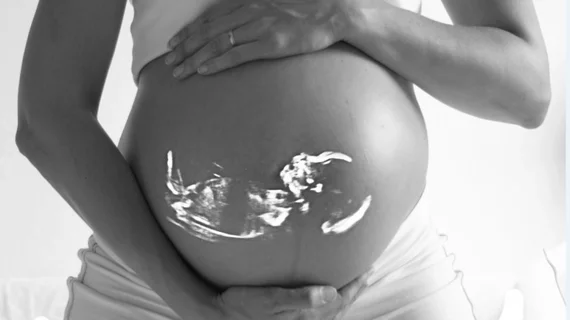Female physicians push for better pregnancy, motherhood resources for women in radiology
As the proportion of women in radiology increases—however slowly—and healthcare’s quadruple aim attempts to prioritize physician well-being, a group of female doctors in Alabama is making a case for more adequate, comprehensive pregnancy and motherhood resources for young residents.
It’s not rare for radiologists to think about starting their families during residency, lead author Kristin K. Porter, MD, PhD, and colleagues in the department of radiology at the University of Alabama at Birmingham, said—for many women, residency falls during their childbearing years. But they’ve also been met with strife when trying to balance work and family, and employers aren’t exactly making it easier.
“In medicine, including radiology and particularly in the academic setting, attrition disproportionately affects women,” Porter et al. wrote in the Journal of the American College of Radiology. “Family responsibilities, especially child rearing, disproportionately affect the careers of women in medicine, resulting in greater obstacles to an academic career, less institutional support and lower career satisfaction.”
Because of that, the authors said, women often remain unmarried and childless, or delay childbirth, until after their medical careers are firmly established. Infertility, miscarriage and elective abortion rates are also higher in female residents and physicians.
Hospitals’ policies about maternity leave, paternity leave and any additional resources they provide for new mothers are highly variable, Porter and co-authors said, but there’s a reason to push for better ones. Despite rates of depression remaining similar between men and women after residency, women’s rates are lower and they report higher career and personal satisfaction if they have kids at home.
“Medicine as a profession has a moral obligation to address these challenges that disproportionately affect female physicians,” the authors wrote. “This is an ethical and healthcare imperative, because marriage and family are positively correlated with happiness and longevity.”
Porter and her team said the best solution lies in a more supportive healthcare culture, one where residents aren’t made to feel uncomfortable or apologetic for motherhood—“the latter of which is particularly self-damaging.”
At the University of Alabama, they launched a resident-led initiative to create a maternal guidance resource aimed at providing expectant mothers with a framework for common issues. The document addresses common questions and concerns, like who to tell about a pregnancy and when, radiation safety considerations, what to expect when balancing residency and motherhood and an explanation of the parental leave policy. Documents with tips about lactation and local childcare options are also included.
The authors said it was important their resource addressed the process of motherhood rather than pregnancy alone, so they also included information about breastfeeding at work, including locations of several lactation rooms and equipment tips, and gave new mothers access to a “residency mothers group” led by a senior resident who had her first child during residency.
“We believe that residents are often stronger than they realize, and this group of women can support and positively impact each other as they walk through their new season of life together,” Porter et al. said. “Junior faculty members are periodically involved in the mother’s group to provide advice and support and to offer a different perspective of life as a mother beyond residency.”

